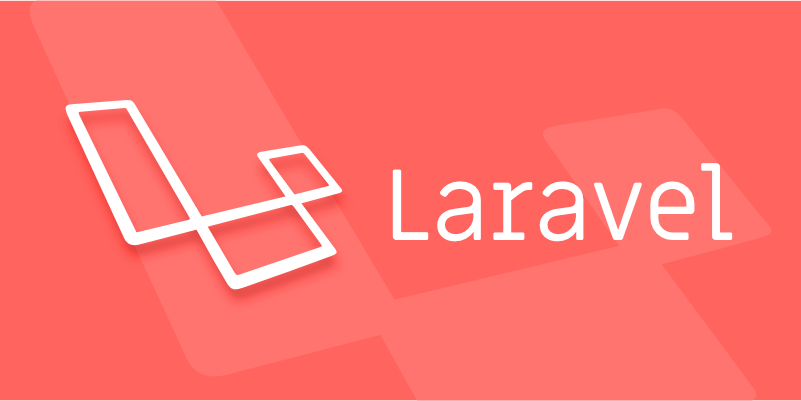When working with large datasets in Laravel, efficient pagination improves performance and user experience. Use simplePaginate() for “Next” and “Previous” links without total count, reducing database load. Select only necessary columns with select() to minimize memory usage. Publish and modify Blade templates to customize pagination views, especially for UI frameworks. For APIs, return structured pagination metadata using paginate() or API resources. These strategies optimize Laravel pagination based on specific needs.

When you're working with large datasets in Laravel, pagination isn't just a nice-to-have — it's essential for performance and user experience. The good news is Laravel makes it pretty straightforward, but there are ways to do it more efficiently depending on your use case.

Use Simple Pagination When You Don’t Need Total Count
If you only need "Next" and "Previous" links and don’t care about showing the total number of pages or jumping to a specific page, simplePaginate() is your friend. It runs a lighter query because it doesn’t calculate the total number of rows.

- It’s faster on large tables
- Reduces database load
- Perfect for infinite scroll or next/prev navigation
Just swap out paginate() with simplePaginate():
$users = User::where('active', 1)->simplePaginate(10);This method is especially useful when dealing with millions of records where counting all rows becomes expensive.

Paginate with Constraints to Reduce Memory Usage
By default, Laravel retrieves all columns when paginating. If your table has large fields like JSON blobs or text columns you don’t need on the listing page, this can add unnecessary overhead.
You can reduce payload size by selecting only the needed fields using select():
$users = User::select(['id', 'name', 'email'])->paginate(10);
Also, if you’re joining other tables or applying filters, make sure those are indexed properly. Otherwise, you might end up with slow queries that pagination won’t fix.
Customize Pagination Views Without Overcomplicating
Laravel uses Blade views for rendering pagination links. While the default styling works fine, you’ll often want to match your UI framework (like Tailwind or Bootstrap).
To customize:
- Run
php artisan vendor:publish --tag=laravel-paginationto publish the views - Modify the Blade templates under
resources/views/vendor/pagination
If you're using Alpine or Livewire, consider tweaking the view to avoid full page reloads. But keep it simple unless you really need AJAX-based navigation.
Handle API Pagination Differently
When building APIs, returning pagination metadata in a structured format (like JSON) helps clients consume your endpoints more predictably. Laravel's paginate() returns an object with current_page, per_page, etc., which you can directly return from a controller:
return User::paginate(10);
This outputs a consistent structure including:
- Current page
- Per-page count
- Total items
- Links for next/previous
You can also transform the data using API resources if you need to shape the output further.
That’s how I usually approach pagination in Laravel — nothing too fancy, but enough to cover most common scenarios.
The above is the detailed content of Implementing efficient pagination in Laravel. For more information, please follow other related articles on the PHP Chinese website!

Hot AI Tools

Undress AI Tool
Undress images for free

Undresser.AI Undress
AI-powered app for creating realistic nude photos

AI Clothes Remover
Online AI tool for removing clothes from photos.

Clothoff.io
AI clothes remover

Video Face Swap
Swap faces in any video effortlessly with our completely free AI face swap tool!

Hot Article

Hot Tools

Notepad++7.3.1
Easy-to-use and free code editor

SublimeText3 Chinese version
Chinese version, very easy to use

Zend Studio 13.0.1
Powerful PHP integrated development environment

Dreamweaver CS6
Visual web development tools

SublimeText3 Mac version
God-level code editing software (SublimeText3)

Hot Topics
 What is Middleware in Laravel? How to use it?
May 29, 2025 pm 09:27 PM
What is Middleware in Laravel? How to use it?
May 29, 2025 pm 09:27 PM
Middleware is a filtering mechanism in Laravel that is used to intercept and process HTTP requests. Use steps: 1. Create middleware: Use the command "phpartisanmake:middlewareCheckRole". 2. Define processing logic: Write specific logic in the generated file. 3. Register middleware: Add middleware in Kernel.php. 4. Use middleware: Apply middleware in routing definition.
 Laravel Page Cache Policy
May 29, 2025 pm 09:15 PM
Laravel Page Cache Policy
May 29, 2025 pm 09:15 PM
Laravel's page caching strategy can significantly improve website performance. 1) Use cache helper functions to implement page caching, such as the Cache::remember method. 2) Select the appropriate cache backend, such as Redis. 3) Pay attention to data consistency issues, and you can use fine-grained caches or event listeners to clear the cache. 4) Further optimization is combined with routing cache, view cache and cache tags. By rationally applying these strategies, website performance can be effectively improved.
 Laravel MVC Architecture: what can go wrong?
Jun 05, 2025 am 12:05 AM
Laravel MVC Architecture: what can go wrong?
Jun 05, 2025 am 12:05 AM
Laravel'sMVCarchitecturecanfaceseveralissues:1)Fatcontrollerscanbeavoidedbydelegatinglogictoservices.2)Overloadedmodelsshouldfocusondataaccess.3)Viewsshouldremainsimple,avoidingPHPlogic.4)PerformanceissueslikeN 1queriescanbemitigatedwitheagerloading.
 How to populate test data using Seeder in Laravel?
May 29, 2025 pm 09:21 PM
How to populate test data using Seeder in Laravel?
May 29, 2025 pm 09:21 PM
Using Seeder to fill test data in Laravel is a very practical trick in the development process. Below I will explain in detail how to achieve this, and share some problems and solutions I encountered in actual projects. In Laravel, Seeder is a tool used to populate databases. It can help us quickly generate test data, which facilitates development and testing. Using Seeder not only saves time, but also ensures data consistency, which is especially important for team collaboration and automated testing. I remember that in a project, we needed to generate a large amount of product and user data for an e-commerce platform, and Seeder came in handy at that time. Let's see how to use it. First, make sure your Lara is
 What is Laravel Migrations? How to use it?
May 29, 2025 pm 09:24 PM
What is Laravel Migrations? How to use it?
May 29, 2025 pm 09:24 PM
Laravel's migration is a database version control tool that allows developers to programmatically define and manage database structure changes. 1. Create a migration file using the Artisan command. 2. The migration file contains up and down methods, which defines the creation/modification and rollback of database tables respectively. 3. Use the phpartisanmigrate command to execute the migration, and use phpartisanmigrate:rollback to rollback.
 Laravel: Simple MVC project for beginners
Jun 08, 2025 am 12:07 AM
Laravel: Simple MVC project for beginners
Jun 08, 2025 am 12:07 AM
Laravel is suitable for beginners to create MVC projects. 1) Install Laravel: Use composercreate-project--prefer-distlaravel/laravelyour-project-name command. 2) Create models, controllers and views: Define Post models, write PostController processing logic, create index and create views to display and add posts. 3) Set up routing: Configure/posts-related routes in routes/web.php. With these steps, you can build a simple blog application and master the basics of Laravel and MVC.
 What are policies in Laravel, and how are they used?
Jun 21, 2025 am 12:21 AM
What are policies in Laravel, and how are they used?
Jun 21, 2025 am 12:21 AM
InLaravel,policiesorganizeauthorizationlogicformodelactions.1.Policiesareclasseswithmethodslikeview,create,update,anddeletethatreturntrueorfalsebasedonuserpermissions.2.Toregisterapolicy,mapthemodeltoitspolicyinthe$policiesarrayofAuthServiceProvider.
 What are routes in Laravel, and how are they defined?
Jun 12, 2025 pm 08:21 PM
What are routes in Laravel, and how are they defined?
Jun 12, 2025 pm 08:21 PM
In Laravel, routing is the entry point of the application that defines the response logic when a client requests a specific URI. The route maps the URL to the corresponding processing code, which usually contains HTTP methods, URIs, and actions (closures or controller methods). 1. Basic structure of route definition: bind requests using Route::verb('/uri',action); 2. Supports multiple HTTP verbs such as GET, POST, PUT, etc.; 3. Dynamic parameters can be defined through {param} and data can be passed; 4. Routes can be named to generate URLs or redirects; 5. Use grouping functions to uniformly add prefixes, middleware and other sharing settings; 6. Routing files are divided into web.php, ap according to their purpose






